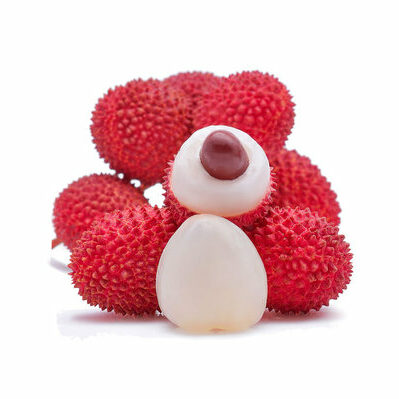
Lychee
What is Lychee?
Lychee is a fruit belonging to the soapberry family of Litchi genus. The fruit has an inedible reddish brown cover, which needs to be peeled to get the white flesh inside. The juicy meat of the fruit covers a dark brown single seed, which is again inedible. Lychee has a floral fragrance and is very sweet.
- Some varieties contain seeds that are negligible in size and hence provide more edible flesh.
- The name comes from French botanist, Pierre Sonnerat, who came across this fruit in his travels and eventually wrote a book in which it was described in detail.
Some of the most popular tropical fruits include:
- Jackfruit
- Lychee
- Passionfruit
- Dragon Fruit
- Custard Apple
- Guava
- Star Fruit
- Papaya
- Rambutan
- Snake Fruit
- Mango
- Bread Fruit
- Mangosteen
Origin
Lychee originated in South China more than 2,000 years ago. They grew on wild trees, and there are still trees in this region that are more than 1,000 years old. China was the first country to domesticate the fruit and cultivate it agriculturally. The earliest record of the cultivation of this fruit is from 111 BC, describing the planting at Emperor Hanwu’s palace. The cultivation of the fruit spread to southeast Asia and India. It spread throughout the world in the 1800s. Chinese gold miners in Australia brought the fruit to the country. Today, most tropical regions of the world cultivate lychee.
Nutrition
Nutritional profile for lychee (1 cup):

For centuries, lychee was used in Traditional Chinese Medicine to treat ulcers, diabetes, cough, diarrhea, indigestion, and intestinal parasites. Recent studies have shown that regular consumption of the fruit does exhibit some of these health benefits. This fruit has antioxidant, antimicrobial, and anti-inflammatory properties. The antioxidants and phenolic compounds in the fruit helps in the prevention of cancers and liver diseases.
Commercial production
China is the largest producer of this fruit in the world, followed by India, Madagascar, Thailand, South Africa, Australia, and Mauritius.
Lychee prefers a tropical climate with good rain. It grows well in low elevated regions and thrives in deep and well-drained loamy soil that is rich in organic matter and mildly acidic. The tree begins to bear fruit after around 5 years of planting and can give yields of up to 100 kg per year. The fruits are harvested when they mature and turn red. They are plucked in bunches along with a small part of the branch and leaves.
Lychees become dried out when exposed to dry climate. Hence, it is advisable to store them in the fridge. They are at their best when consumed within 3 days.
Lychee recipes
Lychee is generally consumed raw as a fruit but is also used to prepare a variety of desserts, confections, and sauces. It can even be used to prepare flavored alcohol, cocktails, and fruit juice. Here are a few recipes:
- Juice
- Ice Cream
- Fruit Spring Rolls
- Lychee Butter Cake
- Fried Rice
- Chinese Mother Sauce #5
- Chicken and Lychee Green Curry
- Chè Thái
- Stuffed Lychees
- Lychee Phirni
FDA regulations
The FDA describes all fresh fruits as raw agricultural commodities. It strictly regulates all aspects its growing, harvesting, packing, and storage.
References
Dr. Xuming Huang, Lychee Production in the Asia-Pacific Region, Department of Horticulture, South China Agricultural University
https://www.fao.org/3/ac684e/ac684e07.htm
Litchi, National Horticulture Board, Ministry of Agriculture & Farmers Welfare, India
https://nhb.gov.in/model-project-reports/Horticulture%20Crops/Litchi/Litchi1.htm
Emanuele, Sonia et al. “Litchi chinensis as a Functional Food and a Source of Antitumor Compounds: An Overview and a Description of Biochemical Pathways.” Nutrients vol. 9,9 992. 8 Sep. 2017, doi:10.3390/nu9090992, https://www.ncbi.nlm.nih.gov/pmc/articles/PMC5622752/
Zhao, Lei et al. “Nutrient components, health benefits, and safety of litchi (Litchi chinensis Sonn.): A review.” Comprehensive reviews in food science and food safety vol. 19,4 (2020): 2139-2163. doi:10.1111/1541-4337.12590, https://pubmed.ncbi.nlm.nih.gov/33337091/
